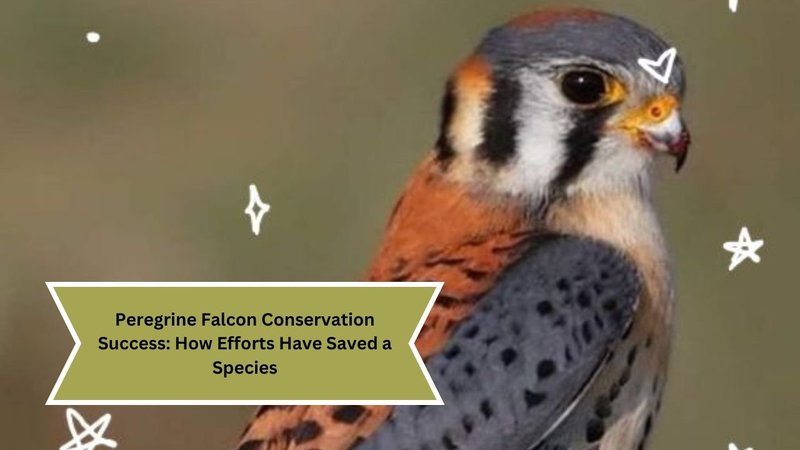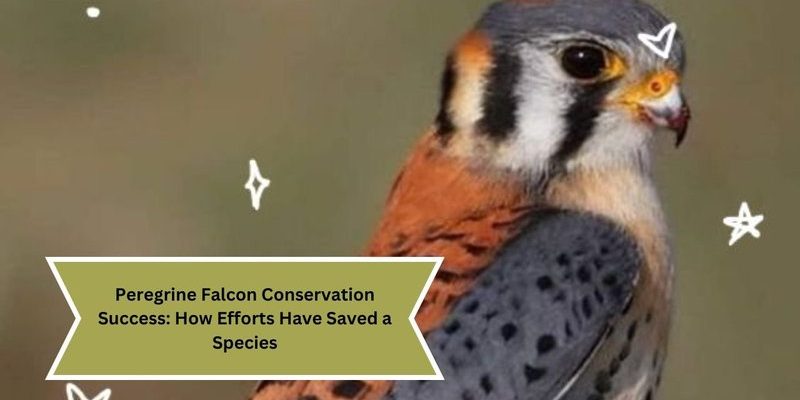
Imagine a world without these majestic birds. It would be like taking the headline act out of a concert—something vital would be missing. Falcons play a crucial role in maintaining balance in their environments by controlling pest populations and contributing to the food chain. Let’s dive into the different conservation efforts aimed at keeping falcons flying high.
The Importance of Falcons in Ecosystems
You might be wondering why we should care so much about falcons. Well, falcons are apex predators, which means they’re at the top of the food chain. They help regulate the populations of smaller animals, like rodents and other birds, keeping ecosystems healthy and balanced.
Here’s the thing: when a species like the falcon declines, it can lead to unchecked population growth among their prey. Think of it like a garden where weeds take over if the flowers aren’t there to compete. This imbalance can have a ripple effect throughout the ecosystem, causing problems that reach far beyond just the falcons.
Additionally, falcons are indicators of environmental health. Their presence suggests that the ecosystem is thriving, while their absence can signal issues like habitat loss or pollution. So, protecting them is not just about saving a bird; it’s about keeping our entire environment in check.
Habitat Preservation and Restoration
One of the most critical conservation efforts aimed at protecting falcons is habitat preservation. Falcons require specific environments to thrive, including cliffs, forests, and open fields. When these habitats are destroyed or degraded, falcons struggle to find food and nesting sites.
Organizations like the BirdLife International and local wildlife agencies are working tirelessly to protect these habitats. They often collaborate with landowners to create conservation easements—agreements that limit development on certain lands while allowing them to be used for farming or recreation. This ensures that crucial falcon habitats remain intact for future generations.
Moreover, habitat restoration is equally important. This involves repairing damaged environments, like replanting native vegetation in areas where forests have been cut down. By restoring these areas, we can help the falcon population rebound, providing them with the food and shelter they need.
Breeding Programs and Raptor Rehabilitation
Breeding programs have become a beacon of hope for falcon conservation. These programs aim to increase falcon populations by breeding them in controlled environments and then releasing them into the wild. For instance, the California condor recovery program has seen significant success with similar methods, which gives us hope for falcons as well.
Here’s how it works: young falcons are raised in protected facilities where they receive care and training. Once they’re ready, they’re released into suitable habitats. These programs don’t just focus on breeding; they also monitor released falcons to ensure they adapt well to their new environment.
Additionally, raptor rehabilitation centers play a vital role. These centers receive injured or sick falcons, providing them with medical care and rehabilitation to return them to the wild. Each successful recovery and release adds another falcon to the population, helping to counteract the challenges they face.
Public Awareness and Education
Raising public awareness is another cornerstone of falcon conservation. If people don’t understand the needs of falcons or the threats they face, they’re less likely to support conservation efforts. Educational programs in schools, community workshops, and social media campaigns all help spread the word about falcon conservation.
For instance, organizations often host “Falcon Days” where families can come and learn about these magnificent birds firsthand. They might see falcons up close, listen to expert talks about their behaviors, and even participate in activities like building artificial nesting sites.
By connecting people to falcons, we foster a sense of responsibility. When people feel invested in a species, they are more likely to contribute to conservation efforts—whether that’s through donations, volunteering, or simply sharing information with friends and family.
Legislation and Policy Changes
Another layer of protection comes from legislation aimed at conserving falcons and their habitats. Laws like the Endangered Species Act in the United States provide legal protection to species that are threatened or endangered. These laws make it illegal to harm or kill falcons and encourage habitat preservation.
Policy changes can be slow, but they’re crucial. When advocacy groups push for stronger laws or stricter regulations on land use and development, they can help create safe havens for falcons. For example, preventing pesticide use near falcon habitats can reduce the risk of poisoning, which has been a significant threat to their survival.
By supporting conservation policies, individuals can help ensure that falcons have the legal protections they need to thrive. It’s like being part of a protectors’ league, standing up for the rights of these incredible birds.
Community Involvement and Support
Conservation isn’t just a job for scientists and policymakers; it’s something that everyone can get involved in. Communities can form volunteer groups to monitor local falcon populations, participate in habitat clean-ups, or even install artificial nesting sites.
For example, some communities have started programs where residents can report sightings of falcons. This data can help researchers understand population trends and identify potential threats. Plus, it builds a sense of community around the goal of protecting these birds.
Honestly, when communities rally together, it creates a powerful force for change. Local involvement can spark broader efforts, influencing policymakers and garnering support from businesses and organizations interested in conservation.
The Future of Falcon Conservation
Looking ahead, the future of falcons depends on continued commitment from individuals, communities, and organizations. While challenges like habitat loss and climate change persist, there’s also a growing movement dedicated to protecting these birds.
Innovative technologies, like tracking devices, are being used to study falcon migration patterns and behaviors. This research helps conservationists understand how to best support falcon populations.
As we become more aware of our impact on the environment, we’ve got the chance to make meaningful changes that benefit not just falcons, but our ecosystems as a whole. Working together, we can ensure that these remarkable birds continue to soar through our skies for generations to come.
In conclusion, conservation efforts aimed at protecting the falcon are vital to preserving the delicate balance of our ecosystems. By focusing on habitat preservation, breeding programs, public awareness, legislation, and community involvement, we can create a brighter future for these magnificent birds. So the next time you spot a falcon soaring overhead, remember—it’s our duty to protect these aerial acrobats and the habitats they call home.

